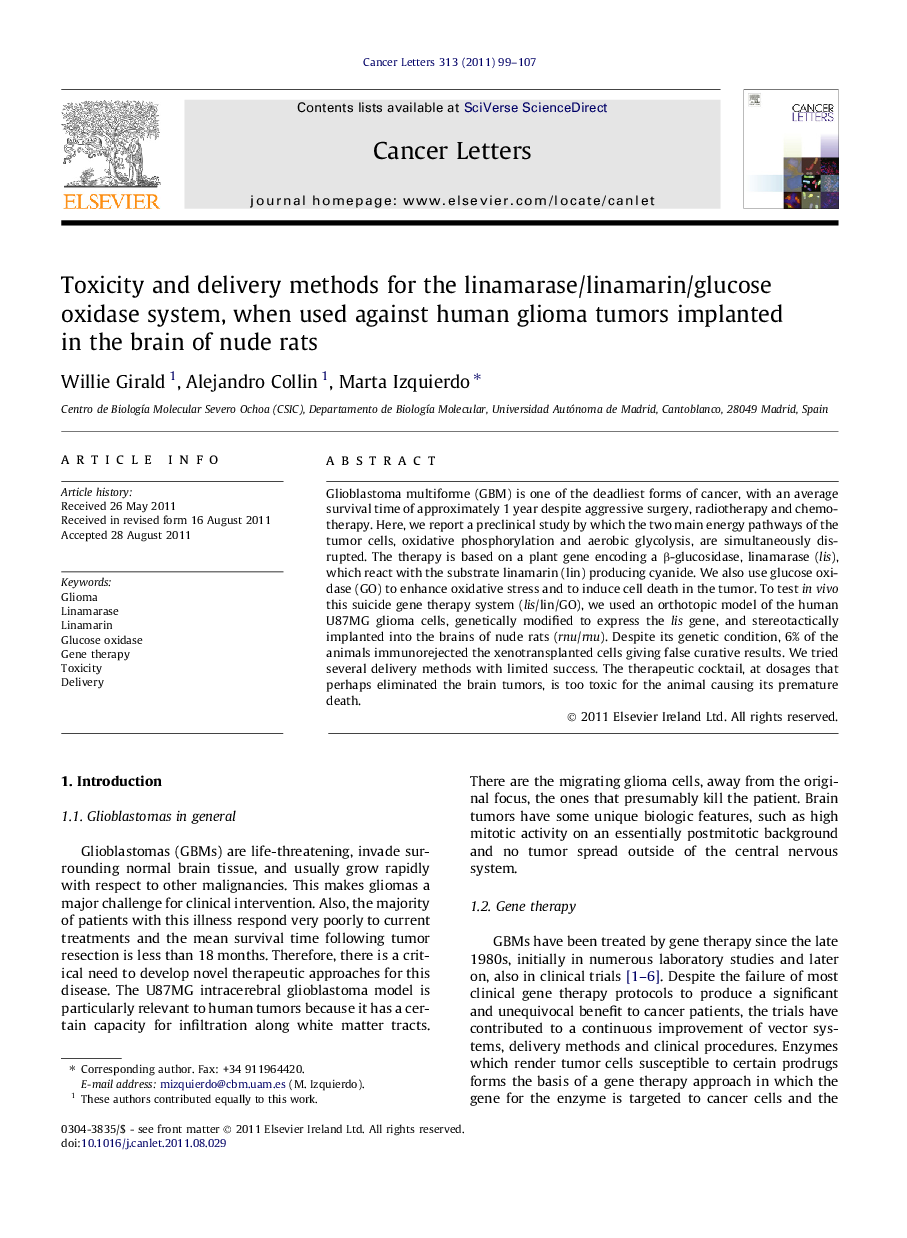| Article ID | Journal | Published Year | Pages | File Type |
|---|---|---|---|---|
| 2113524 | Cancer Letters | 2011 | 9 Pages |
Glioblastoma multiforme (GBM) is one of the deadliest forms of cancer, with an average survival time of approximately 1 year despite aggressive surgery, radiotherapy and chemotherapy. Here, we report a preclinical study by which the two main energy pathways of the tumor cells, oxidative phosphorylation and aerobic glycolysis, are simultaneously disrupted. The therapy is based on a plant gene encoding a β-glucosidase, linamarase (lis), which react with the substrate linamarin (lin) producing cyanide. We also use glucose oxidase (GO) to enhance oxidative stress and to induce cell death in the tumor. To test in vivo this suicide gene therapy system (lis/lin/GO), we used an orthotopic model of the human U87MG glioma cells, genetically modified to express the lis gene, and stereotactically implanted into the brains of nude rats (rnu/rnu). Despite its genetic condition, 6% of the animals immunorejected the xenotransplanted cells giving false curative results. We tried several delivery methods with limited success. The therapeutic cocktail, at dosages that perhaps eliminated the brain tumors, is too toxic for the animal causing its premature death.
► In this study we evaluate a gene therapy suicide method against glioblastoma. ► Human gliomas are treated with linamarase, linamarin and glucose oxidase. ► Several delivery methods are evaluated with limited success. ► We conclude that the treatment is too toxic for the animal at curative concentrations.
